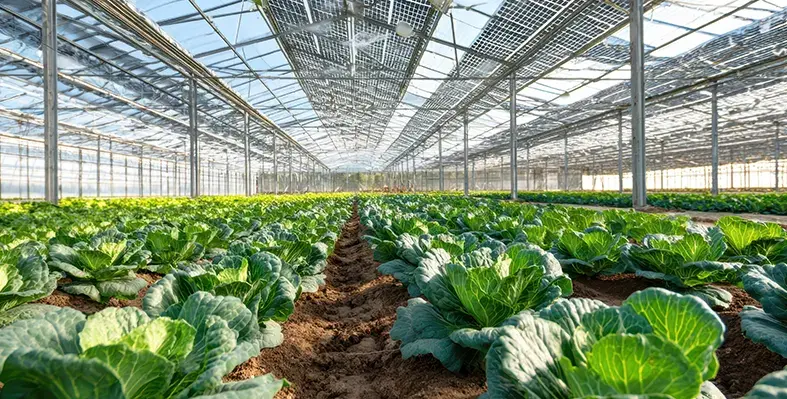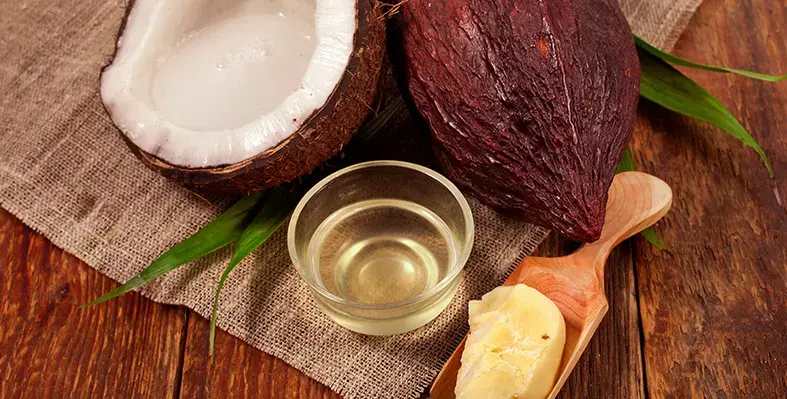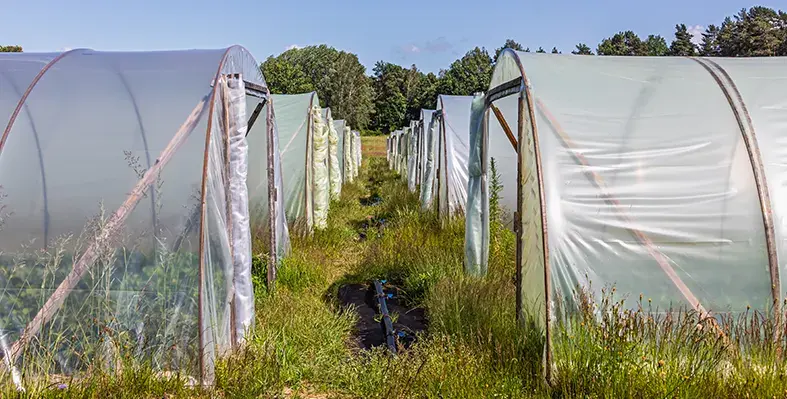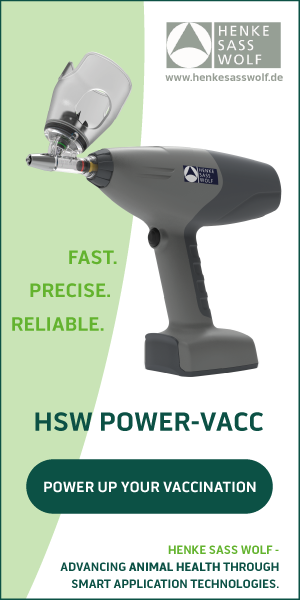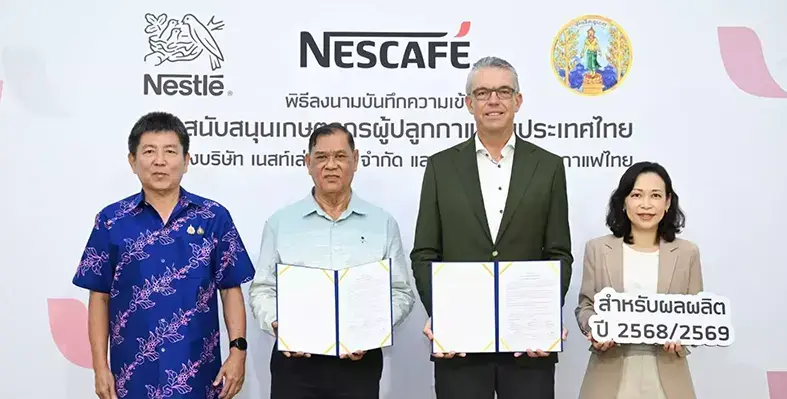
Nestlé continues to play a pivotal role in advancing Thailand’s coffee sector.(Image credit: Nestlé)
Nestlé (Thai) Ltd. has renewed its long-standing partnership with Thai coffee farmers by signing a new Memorandum of Understanding (MoU) with the Thai Coffee Growers Association
The agreement, covering the 2025/2026 harvest season, affirms Nestlé’s commitment to purchasing Robusta coffee beans directly from local farmers while continuing to promote sustainable farming practices and improve livelihoods within the coffee-growing communities.
The signing ceremony was held in Chumphon Province, a key region for coffee production in Thailand, and was honoured by the presence of the provincial governor, reflecting the significance of the initiative to the local economy.
As part of the agreement, Nestlé will support farmers not only through bean purchases but also by sharing practical knowledge on Regenerative Agriculture. This approach focuses on improving soil health, conserving water, and promoting biodiversity, ultimately helping farmers build climate resilience and boost both yield and quality.
“For several decades, Nestlé has continuously supported our local coffee farmers. Additionally, Nestlé has consistently been the largest purchaser of local Robusta beans in Thailand. The signing of Memorandum of Understanding (MoU) each year reaffirms that Nestlé will purchase Robusta coffee beans directly from Thai farmers. Moreover, we support farmers in adopting Regenerative Agriculture practices in their coffee plantations through knowledge-sharing programs and various training sessions. This not only helps improve coffee production in terms of both quantity and quality but also aids in restoring ecosystems and protecting soil and water resources, enabling farmers to cope with climate change,” said Salinla Seehaphan, Corporate Affairs Director at Nestlé (Thai) Ltd.
Thianchai Chookittiwiboon, Governor of Chumphon Province, praised the initiative, emphasising coffee’s economic importance to the region. He noted that direct support from companies like Nestlé aligns with the province’s goal to establish itself as a globally recognised “Robusta Metropolis.”
Echoing this, Prayoon Songprasert, Chairman of the Thai Coffee Growers Association, acknowledged Nestlé’s ongoing contributions. He highlighted the positive impact of high-yield plantlets developed by Nestlé and the company’s training initiatives, which have led to consistent quality and income growth for farmers.
With this renewed partnership, Nestlé continues to play a pivotal role in advancing Thailand’s coffee sector promoting sustainability, boosting farmer incomes, and securing the future of Robusta cultivation in the country.



